What is yakitori?
Yakitori is a Japanese dish made of skewered chicken and vegetables, grilled over charcoal, or another heat source.
It is a classic menu at Japanese izakaya (pubs) and is enjoyed by many Japanese people of all ages.
Yakitori is so popular in Japan that you can even find in convenience stores.
It is seasoned with either salt (shio) or sauce (tare).
Shio flavored yakitori is seasoned simply with a sprinkling of salt, enhancing the natural flavors of the ingredients.
Tare flavored yakitori is seasoned with a salty-sweet soy sauce-based sauce that has similar flavors to teriyaki sauce.
Yakitori and tare are a perfect match, and the flavors are sure to please your appetite for alcoholic drinks or rice.
The history of yakitori is long, and the origins of the dish can be traced back to prehistoric times, when grilling and eating chicken was already a common practice.
Yakitori became popular in Japan about 65 years ago, when broilers (young chickens that can be fattened up in a short period of time) were introduced from the U.S.
In recent years, new types of yakitori restaurants have emerged, including those offering wine pairings, reasonably priced restaurants requiring reservations only, and those that offer non-skewered yakitori.
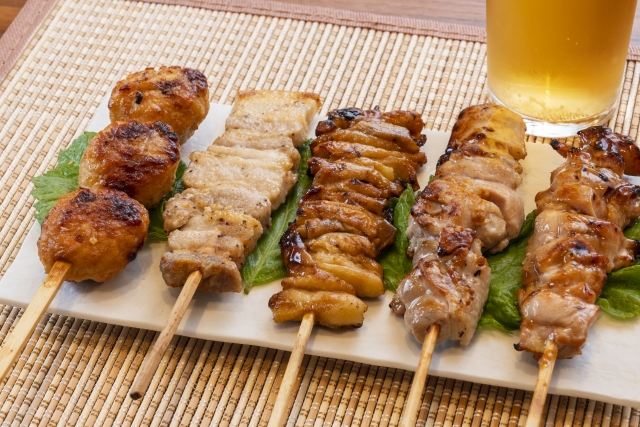
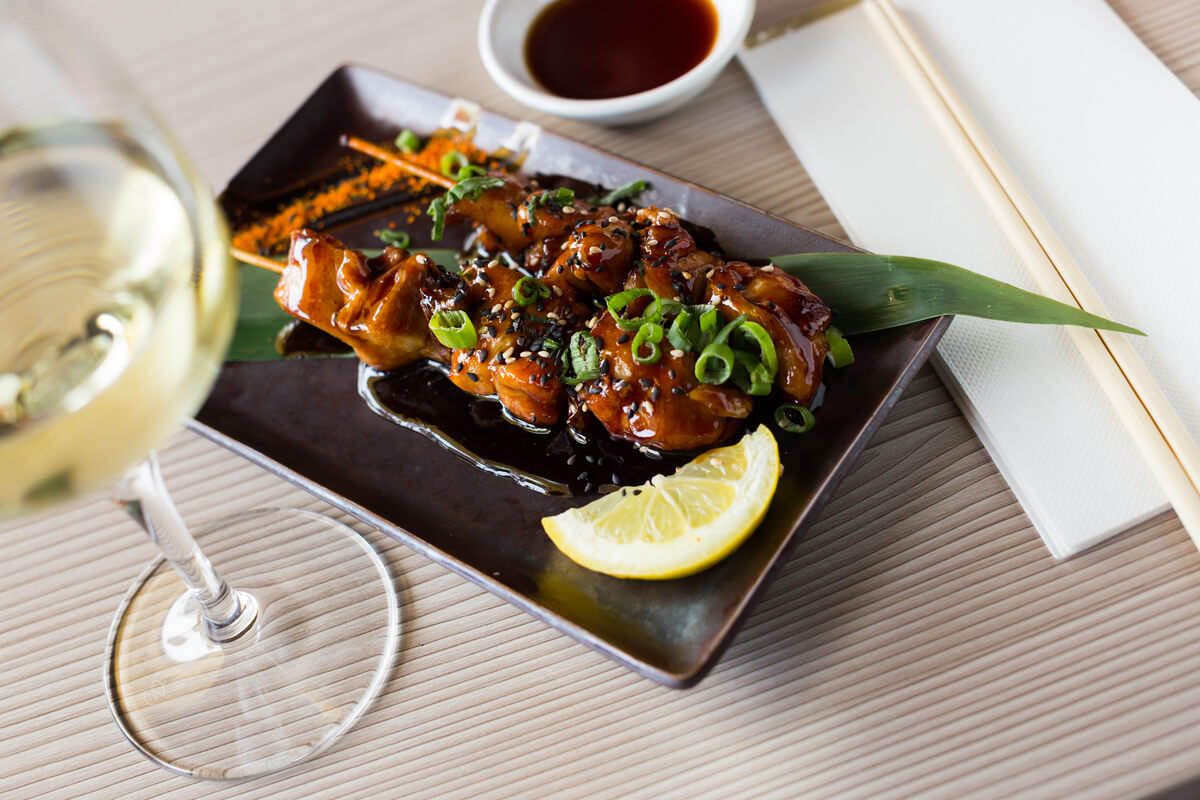
Varieties of yakitori
A wide variety of chicken cuts are used in yakitori.
The following explains some of the cuts most commonly used.
Momo (thigh)
The top portion of the leg.
This part of the chicken is muscular, quite chewy, and each bite gives you a juicy flavor.
It is one of the most classic types of yakitori, and is recommended to be enjoyed with beer to wash down its rich flavor.
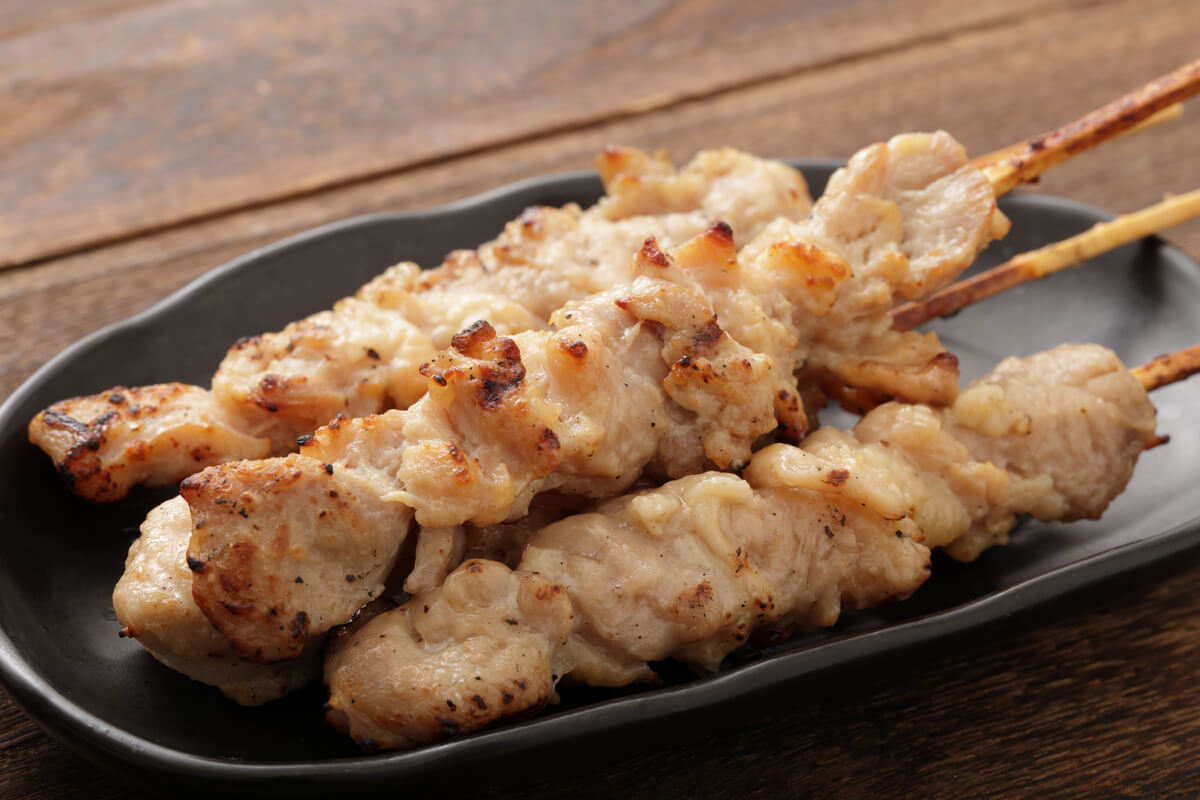
Negima (thigh and leek)
Yakitori made using chicken thigh and leek.
The crunchy texture of the leek and the juicy flavor of the thigh is irresistible.
While it is delicious with the tare flavor, we also recommend having it with salt if you want to fully appreciate the texture of the leek.
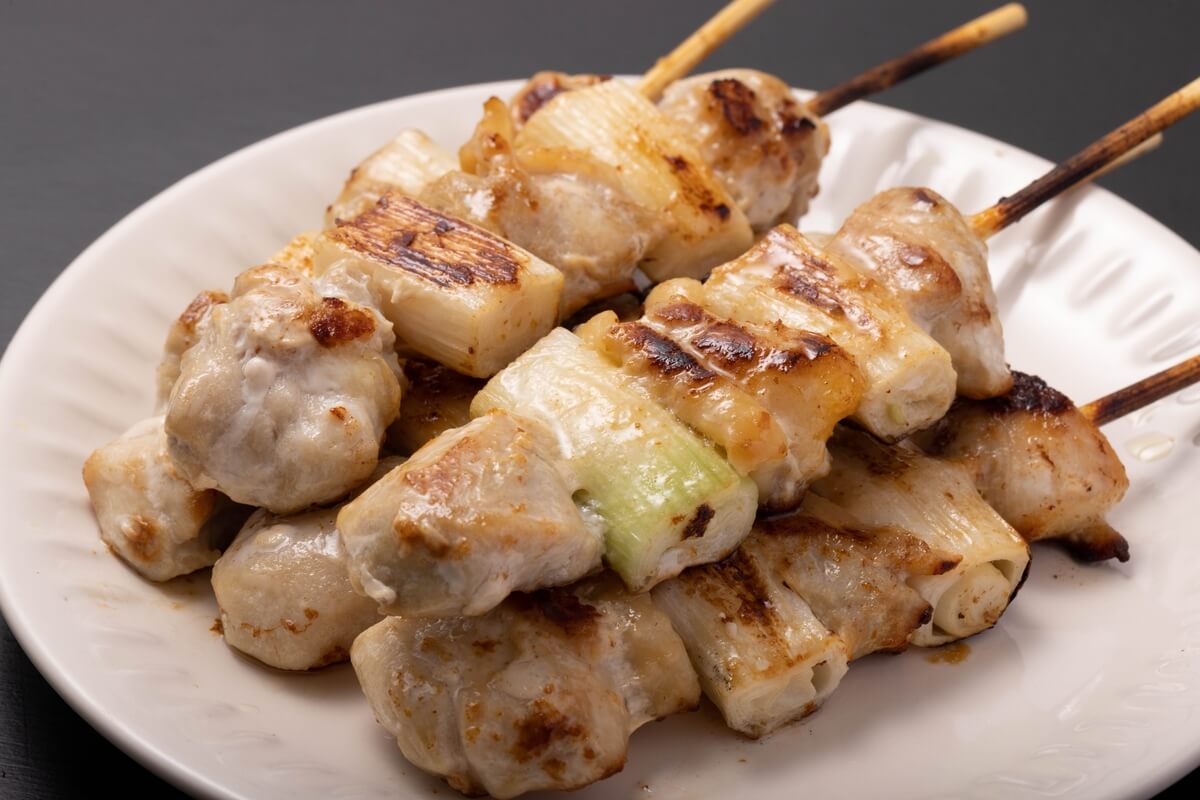
Tsukune (chicken meatballs)
Minced chicken, eggs, and chicken cartilage are mixed and grilled.
Enjoy the tender tsukune alongside the crunch of the cartilage.
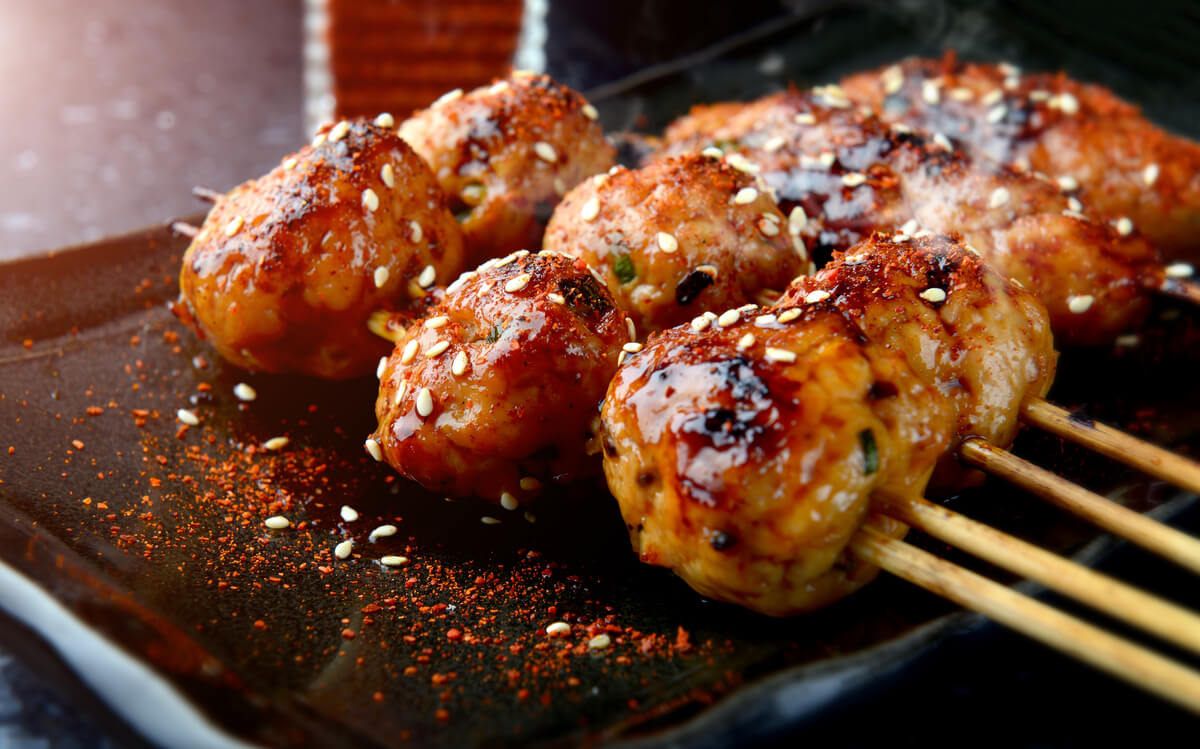
Torikawa (skin)
Skin of the neck.
Well-fried torikawa has a crunchy texture, while soft-fried ones have a chewy texture.
This part is rich in sweetness and contains good amounts of collagen unique to fat.
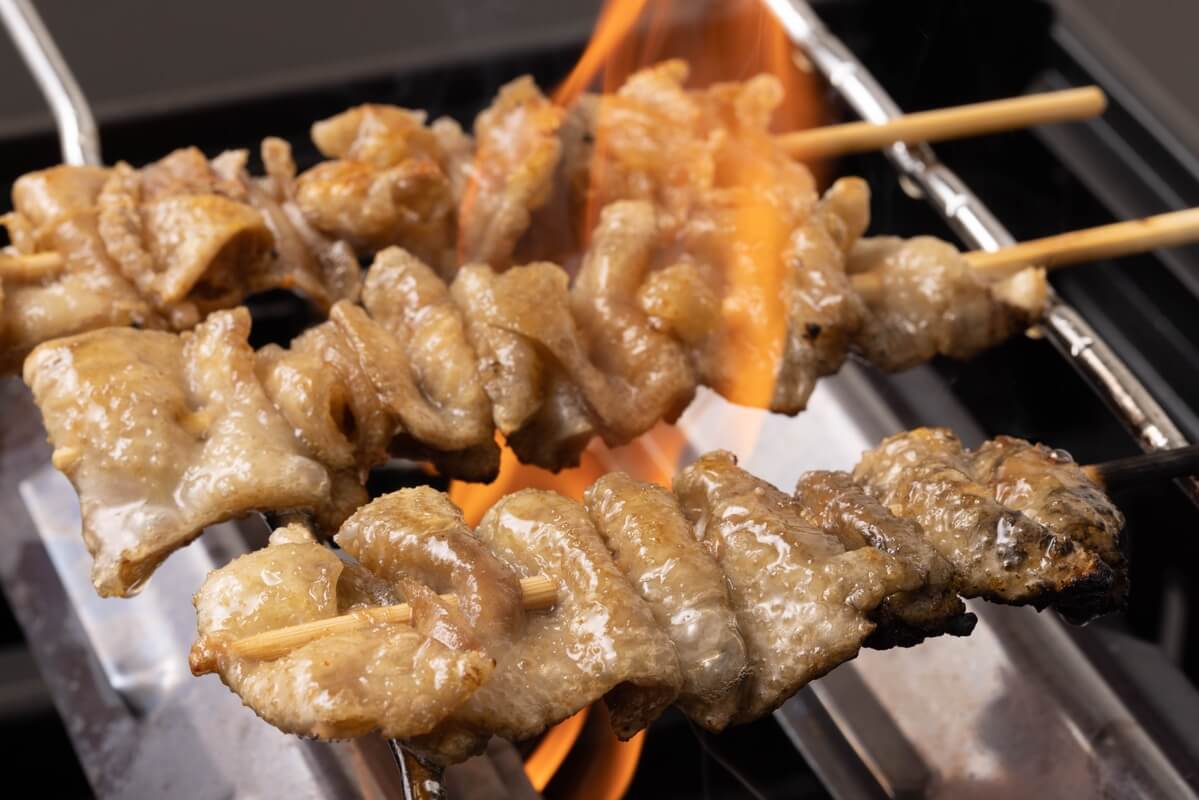
Reba (liver)
Chicken liver.
This highly nutritious part contains high levels of vitamin A,and has a thick, melt-in-your-mouth richness unique to liver.
High-quality liver is soft and melts in the mouth.
It is sometimes compared to cheese because of its texture and richness.
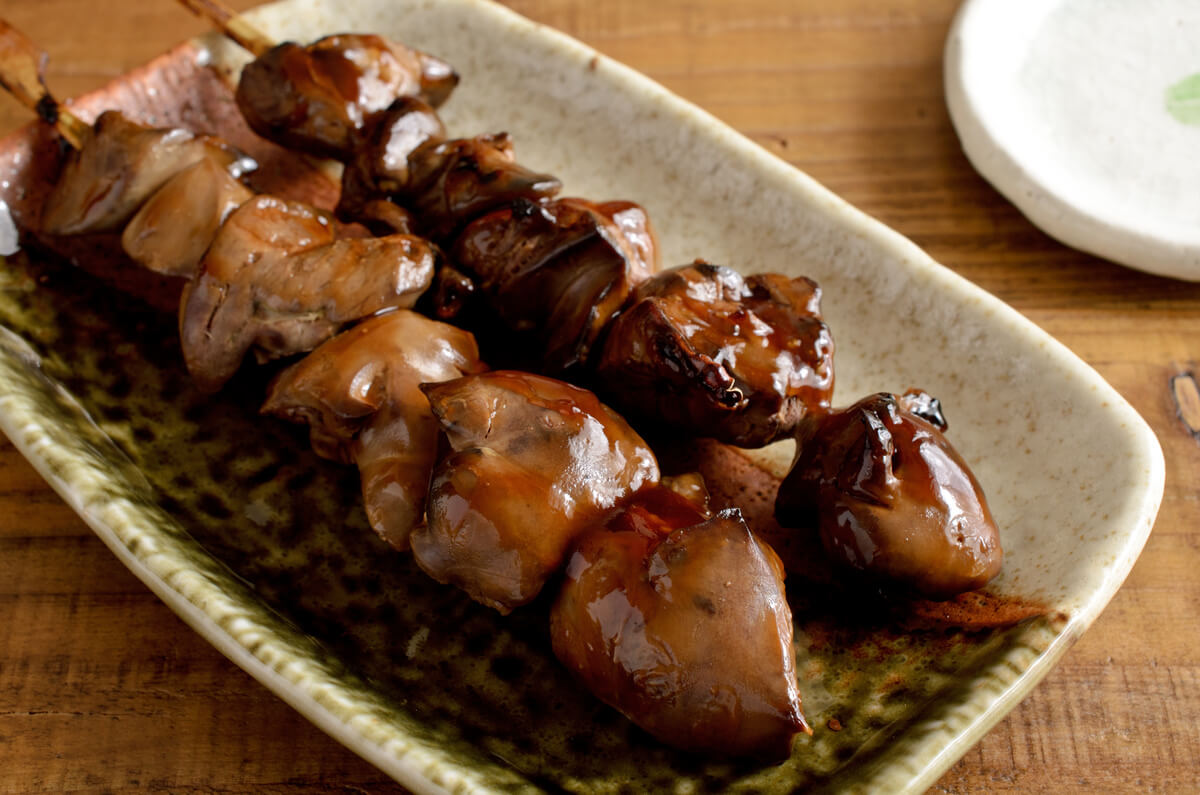
Parts that go best with sauce or salt
When ordering yakitori, one of the first decisions you’ll face is: Salt or Sauce?
Both are delicious, but depending on the chicken part, one may suit better than the other.
Here, we’ll explain which parts go best with each flavor and why.
Which parts go well with sauce?
The sauce used for yakitori is a rich and sweet-savory glaze made by simmering soy sauce, mirin, and sugar.
Because of its strong flavor, it pairs best with juicy or rich parts of the chicken.
For example:
- Tsukune (chicken meatballs): Soft, fluffy meatballs coated in the sweet sauce make for a perfect bite. Some restaurants even serve it with an egg yolk for dipping.
- Momo (thigh): Rich and juicy, thigh meat absorbs the sauce beautifully and pairs well with rice or alcoholic drinks.
- Reba (liver): While liver has a strong flavor, the sauce helps mellow it out and makes it more approachable.
- Bonjiri (chicken tail): This fatty, flavorful cut becomes especially satisfying when grilled with sauce.
In short, rich, fatty, or bold-tasting parts are best balanced by the sweet-savory sauce.
Which parts go well with salt?
Salt is a simple seasoning that brings out the natural umami of the chicken.
It works best when you want to enjoy the true flavor and texture of each part.
For example:
- Negima (thigh and leek): The sweet crunch of the leek is more noticeable when paired with salt, which enhances its freshness.
- Seseri (neck meat): Known for its bouncy texture and deep flavor, this cut becomes even more flavorful with just salt.
- Sunagimo (gizzard): Loved for its unique, chewy texture, salt allows you to enjoy its crisp bite and clean flavor.
- Kawa (skin): When grilled until crispy, skin seasoned with salt brings out the sweetness of the fat in the best way.
So if you’re looking for a cleaner taste or to enjoy texture-focused cuts, salt is the way to go.
Tips for first-timers
If it’s your first time trying yakitori and you’re not sure what to order:
- Thigh with sauce
- Negima with salt
This is a safe and tasty starting point.
Differences between casual and high-end yakitori restaurants
Yakitori is a beloved food culture in Japan that can be enjoyed both casually and as a fine dining experience.
Surprisingly, the same dish—yakitori—can offer completely different experiences depending on where you go.
Let’s take a look at how casual spots and high-end restaurants differ.
Casual yakitori spots (izakaya or stand-up bars)
Casual yakitori shops are easy to drop into and have a friendly, lively atmosphere.
Each skewer typically costs around 100 to 200 yen, making it affordable and fun.
Most places let you choose individual parts from the menu, and many offer photos to help you decide.
If you’re unsure, ordering a “5-skewer set” is a great way to sample the classics.
You can also enjoy your yakitori with beer or Japanese sake, along with side dishes like edamame, tofu, or fried chicken.
Recommended for:
- People who want to enjoy yakitori in a casual setting
- Travelers looking to soak in local vibes
- Those who want to try a variety of skewers without spending too much
High-end yakitori restaurants (reservation-only, OMAKASE style)
On the other end of the spectrum are yakitori restaurants that treat each skewer like an art form.
These high-end places offer yakitori as part of a multi-course OMAKASE meal, where each skewer is grilled and served at the perfect moment.
Prices typically range from ¥5,000 to over ¥10,000, but what you get in return is exceptional: premium ingredients, expert technique, and a refined experience.
You may also encounter rare cuts like “hatsumoto” or “soriresu,” as well as custom-made sauces, seasoned salts, and even wine pairings.
More and more of these restaurants are offering English menus and welcoming international guests.
Recommended for:
- Those who want to experience yakitori as a culinary art
- Diners who prefer a calm, intimate atmosphere
- Special occasions or memorable meals
How to make yakitori
Making yakitori is more than just simply cooking it; it requires craftsmanship with a set of delicate techniques.
The first step is to select fresh, high quality chicken.
Next is the preparation of the meat.
The chicken is cut into appropriately sized pieces.
The cutting method varies according to the portion of meat and should take advantage of the cut’s texture.
The cut meat is then skewered.
The thickness of the meat and the way it is placed on the skewer greatly affects how it is grilled; the skill of the chef is the key to success.
Once the skewering is complete, the meat is seasoned with a sauce or salt.
The sauce typically consists of soy sauce, sugar, mirin (sweet rice wine), sake, dashi broth, and other ingredients.
Each restaurant has its unique sauce blend, which creates its own secret flavor.
The timing of coating with sauce varies from one restaurant to another, including before grilling, during grilling, or after grilling.
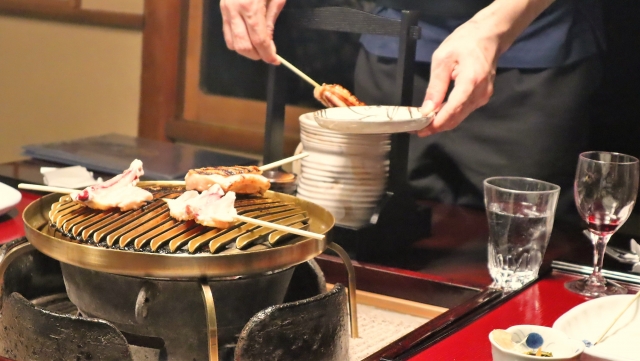
The meat is grilled over a charcoal or gas fire.
The amount of heat, the rotation of the meat, the distance from the heat, and other details must be finely tuned; this is where the chef shows his skills.

How to eat yakitori
Choose tare (sauce) or shio (salt)
Select your preferred seasoning at the time of ordering.
The sauce has a salty-sweet taste, whereas the salt gives a simple and natural flavor.
We recommend choosing your seasoning depending on the cut.
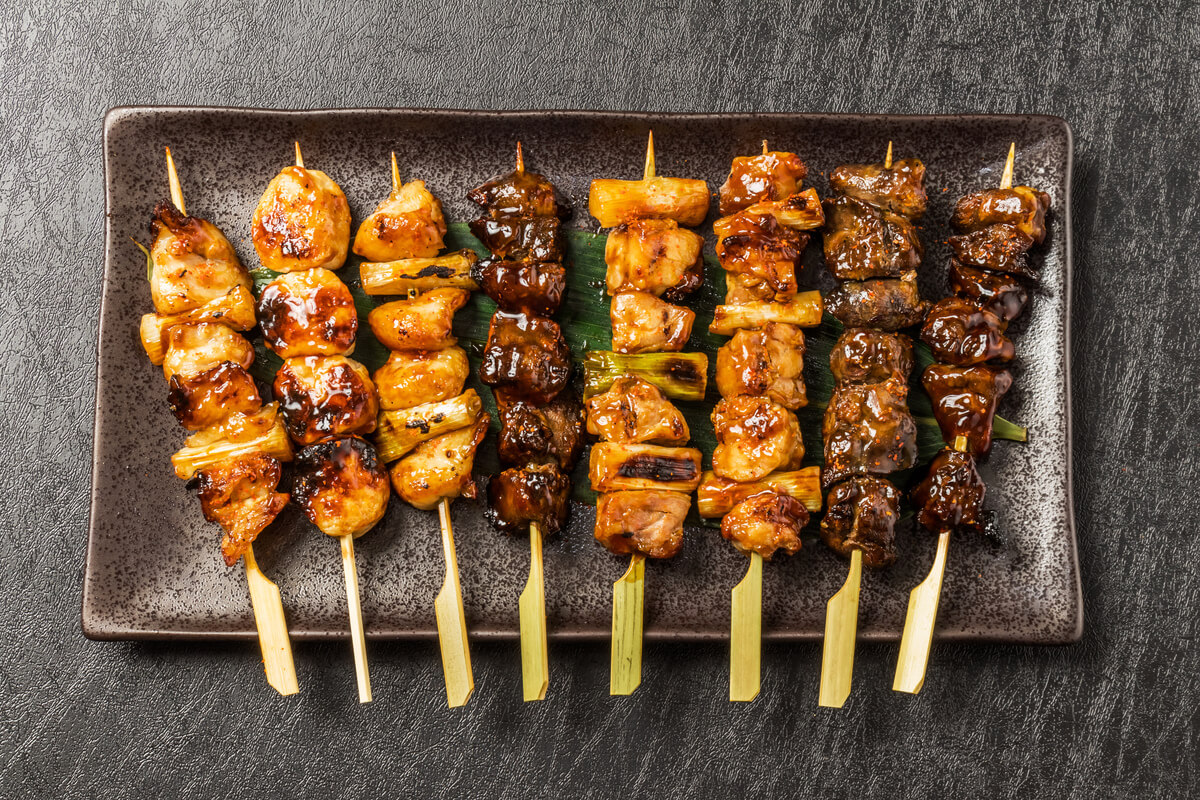

Eat while hot
Yakitori is best enjoyed while it's hot, as it maximizes its aroma and juiciness.
Eat directly from the skewer
Generally, you can eat yakitori directly from the skewer.
This allows you to savor the natural flavors of the meat.
However, if it's difficult to eat, you can remove the meat from the skewer with chopsticks.
People’s reaction when eating
Search Restaurants by Destination

Search Restaurants by Popular Cuisines





